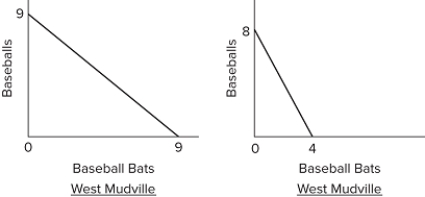Multiple Choice
 Assuming labor forces of equal size, the production possibilities curves suggest that workers in West Mudville will have
Assuming labor forces of equal size, the production possibilities curves suggest that workers in West Mudville will have
A) lower wages than workers in East Mudville before trade but equal wages after trade.
B) higher wages than workers in East Mudville both before and after trade.
C) lower wages than workers in East Mudville both before and after trade.
D) higher wages than workers in East Mudville before trade but lower wages after trade.
Correct Answer:

Verified
Correct Answer:
Verified
Q17: The ratio at which nations will exchange
Q33: Adam Smith recognized the benefits from trade
Q34: <img src="https://d2lvgg3v3hfg70.cloudfront.net/TB8602/.jpg" alt=" In the accompanying
Q35: <img src="https://d2lvgg3v3hfg70.cloudfront.net/TB8602/.jpg" alt=" The hypothetical nations
Q37: <img src="https://d2lvgg3v3hfg70.cloudfront.net/TB8602/.jpg" alt=" Refer to the
Q39: <img src="https://d2lvgg3v3hfg70.cloudfront.net/TB8602/.jpg" alt=" The accompanying table
Q42: If a nation has a comparative advantage
Q81: In a two-nation, two-good world, if both
Q97: Which of the following product groups is
Q240: In 2018, the United States became a